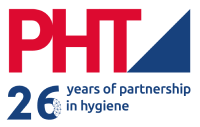Food safety: Creating a HACCP-concept
The most important quality management system for food safety is the so-called HACCP concept (“Hazard Analysis and Critical Control Points”). Since 1 January 2006, anyone who handles or places food on the market has had to draw up such a concept. This regulation applies to all food sectors such as butchers, bakeries, catering businesses, food service providers and retailers. The purpose of the HACCP concept is to protect consumers from potential health risks throughout the entire process – from production to the shop counter.
How do you create an HACCP concept for a butcher’s shop, bakery or other food manufacturer?
7 steps to a HACCP concept for food businesses
There are seven basic steps to follow in every HACCP procedure. We have summarised them for you here:
Step 1:
Identify hazards and assess risk
In the first step, food businesses identify all possible hazards and assess the potential risk. Three major hazard areas can be identified. 1. physical hazards such as glass, metal parts, plastic parts or other foreign bodies. 2. chemical hazards such as dioxins, heavy metals, toxins such as plant toxins, pesticide residues, pharmaceuticals, biocides, additives, cleaning agents, lubricants or residues from incorrect dosing. 3. biological hazards such as moulds, bacteria, parasites and storage pests.
Step 2:
Identify critical control points
Once the hazards have been identified, it is determined whether the hazards are critical control points (CCP), i.e. where the hazards can occur.
Step 3:
Set limit values for haccp
A limit value is then set for each critical control point. If this is not adhered to, there is a potential health risk for the consumer.
Step 4:
Introduce a monitoring system
Butchers, bakeries and other food manufacturers continuously monitor the critical control points. Control procedures are introduced and defined for this purpose. Controls are usually carried out independently.
Step 5:
Determine corrective measures
Corrective measures must be decided in advance to take effect if the limit values deviate.
Step 6:
Carry out evaluation measures
The HACCP concept should be reviewed at regular intervals. Does it still fulfil its tasks? Are the latest findings taken into account? Can all measures be implemented if necessary or have they been implemented? These questions are answered.
Step 7:
Create documentation for haccp
The concept and implementation such as control measures are documented. The documentation includes data on the control points, the limit values, the activities for inspection and evaluation as well as the procedure in the event of deviations. The complete documentation must be submitted for inspections, for example by the food inspection authorities.
HACCP consulting for food manufacturers
The requirements for an HACCP concept are so complex that it is advisable to consult specialists. With PHT you can ensure your Personnel and Facility hygiene for your food safety.
If you have any further questions about hygiene in food processing or would like advice, please contact us.




